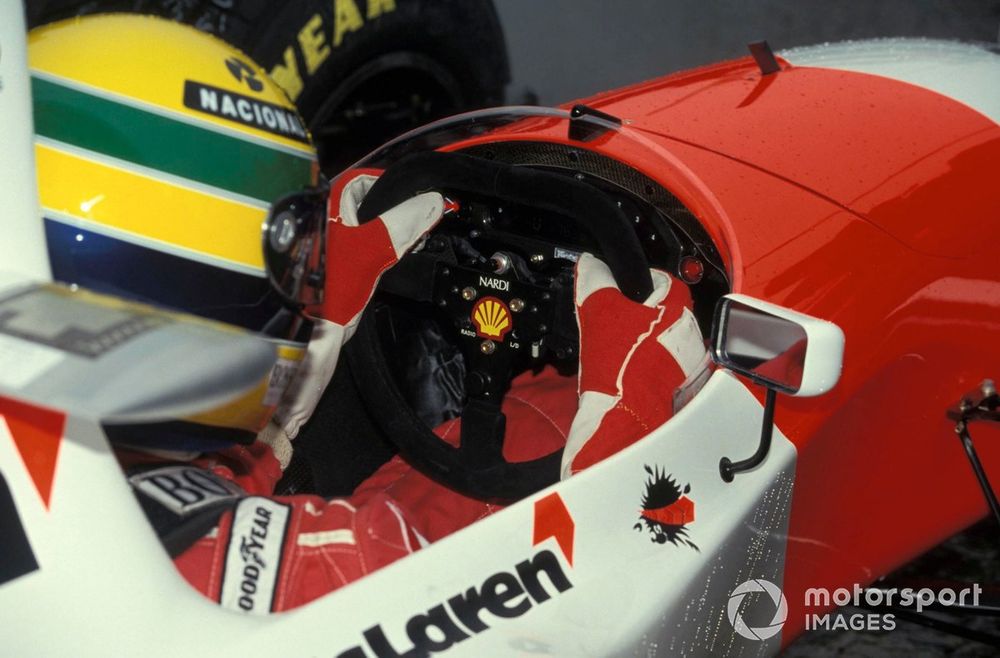F1 cars are incredibly complex machines which take several years plus millions of dollars to design and build before heading to a track.
A key component of that is the steering wheel. Of course, it is essential for every car, but the F1 steering wheel is unlike any that is seen on the road.
Over the years F1 steering wheels have changed and developed from simple circles into the modern-day version, which looks like it has come straight from a rocket ship. So here is everything about the F1 steering wheel, its evolution, how it works and more.
Evolution of the F1 steering wheel
An F1 steering wheel has not always looked like it does in the present day. Back in the championship’s early years, it held distinct similarities to the average steering wheel of a road car.
This is because when Juan Manuel Fangio, Stirling Moss and co raced in the 1950s, F1’s technology was not that advanced. A basic steering wheel comprised of wood and aluminium was all they had to control the car with but, as the years went by, changes inevitably happened.
In the 1960s, while technology remained quite basic, the wooden wheel rim became leather wrapped for more grip. Little changes were then made to the 1960s spec until midway through the 1970s when the first button appeared.
This was an emergency ignition-kill switch. At the time, F1 engines were fitted with throttle sliders which tended to open if dirt became stuck in the mechanism, so the switch allowed drivers to quickly turn the engine off before hitting a barrier.
It kickstarted major changes over the coming years, and the 1980s also saw suede replace the leather rim which received a lot of plaudits. Stefan Johansson, F1 driver across two stints between 1980 and 1991, said it was the first “real improvement” because it gave him more of a feel in the car through improved grip.
Drivers then started requesting steering wheels specific to their driving style. Nigel Mansell often put a lot of force through the wheel, so he opted for a much thicker grip, while Ayrton Senna did the opposite because the triple world champion was smoother in his technique.
Photo by: Ercole Colombo
Ayrton Senna, McLaren MP4-8 Ford
Steering wheels also took on more responsibility in the 1980s as gadgets started to appear. One was a quick-release mechanism, so steering wheels became easily detachable which was important when cockpits started to get smaller.
It meant the steering wheel was no longer a large…
Click Here to Read the Full Original Article at Autosport.com – Formula 1 – Stories…

